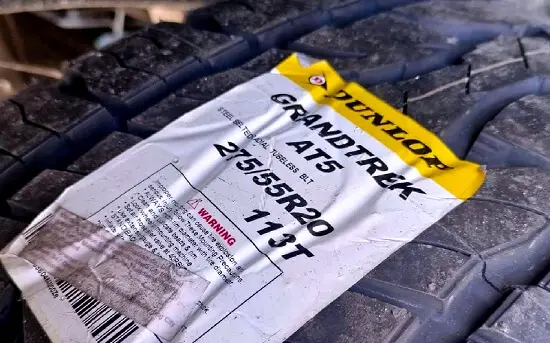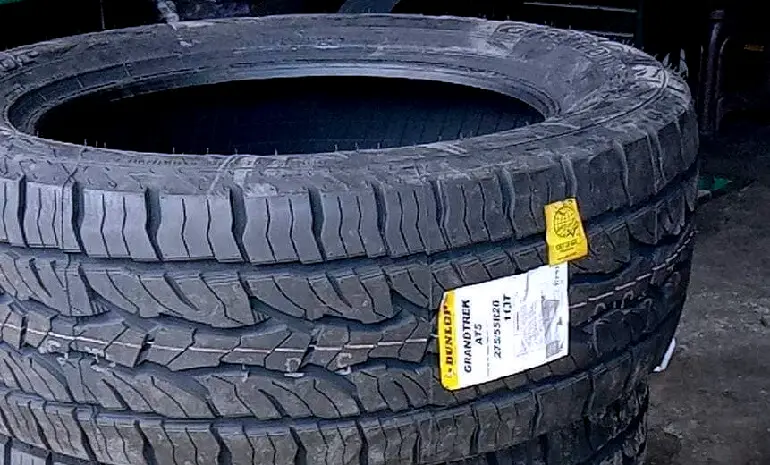Tire Size 275/55r20 vs 275/65r20

Switching from 275/55r20 to 275/65r20 tires involves a significant change in tire size that exceeds the recommended 3% difference.
While it may offer some benefits for off-road use, it also comes with potential drawbacks that drivers should carefully consider before making the change.
- Tire diameter increases by 6.8%, exceeding the recommended 3% limit
- Speedometer accuracy decreases, showing slower speeds than actual
- Potential for rubbing and clearance issues without vehicle modifications
- May impact fuel efficiency and acceleration performance
- Improved off-road capabilities but possible on-road handling changes
275/55r20 vs 275/65r20
The primary difference between 275/55r20 and 275/65r20 tires lies in their overall diameter. This change significantly impacts various aspects of vehicle performance and may require modifications to ensure proper fitment and functionality.

Fitment Guide
The general rule is that replacement tires should be within plus or minus 3% of the original tire’s overall diameter. In this case, the difference between 275/55r20 and 275/65r20 tires is 6.8%, which exceeds the acceptable range.
As a result, this interchange is not recommended without making necessary adaptations to prevent issues such as rubbing or clearance problems.
On-Road Impact
Switching to larger tires can significantly affect a vehicle’s on-road performance. Here’s how the change from 275/55r20 to 275/65r20 tires might impact your driving experience on paved surfaces:
- Speedometer Accuracy: One of the most noticeable effects will be on your speedometer readings. With the larger tires, your actual speed will be higher than what the speedometer shows. For example, when your speedometer reads 20 mph, you’ll actually be traveling at 21.36 mph. This discrepancy increases at higher speeds, potentially leading to unintentional speeding.
- Fuel Efficiency: The larger, heavier tires may slightly decrease fuel efficiency. The increased rolling resistance and additional weight require more energy to move, potentially reducing your miles per gallon.
- Acceleration: Your vehicle might experience a slight decrease in acceleration performance. The larger tires effectively change the final drive ratio, which can make the vehicle feel less responsive when accelerating from a stop or during passing maneuvers.
- Handling: The taller sidewalls of the 275/65r20 tires (7.04 inches compared to 5.95 inches) may introduce a bit more flex in corners. This could result in a slightly less precise steering feel, particularly during quick maneuvers or sharp turns.
- Ride Comfort: On the positive side, the taller sidewalls can provide a smoother ride over rough roads or small bumps. The extra rubber acts as additional cushioning, potentially improving overall ride comfort.
- Braking Distance: The larger tires may slightly increase braking distances due to the increased rotational mass. However, this effect is usually minimal and may not be noticeable in everyday driving situations.

Off-Road Impact
For those who enjoy taking their vehicle off the beaten path, the switch to 275/65r20 tires can offer some advantages. Here’s how the change might enhance your off-road experience:
- Ground Clearance: The larger diameter tires will increase your vehicle’s ground clearance by approximately 1 inch. This improvement can be significant when navigating over rocks, logs, or uneven terrain, reducing the risk of underbody damage.
- Traction: The taller sidewalls allow for better tire deformation at lower air pressures, potentially improving traction in soft surfaces like sand or mud. This can be a notable advantage in challenging off-road conditions.
- Obstacle Clearance: The increased overall diameter helps the vehicle roll over obstacles more easily. This can make a difference when tackling larger rocks or crossing deep ruts on trails.
- Flotation: In loose surfaces like snow or sand, the larger tire footprint can provide better flotation, helping to prevent the vehicle from sinking or getting stuck.
- Durability: The taller sidewalls may offer improved resistance to punctures and sidewall damage from rocks or other sharp objects encountered off-road.

What is the Difference Between 275/55r20 and 275/65r20?
The main difference between 275/55r20 and 275/65r20 tires lies in their overall diameter. The 275/65r20 tire has a diameter of 34.07 inches, which is 2.17 inches (or 6.8%) larger than the 275/55r20 tire with a diameter of 31.91 inches.
This significant increase in diameter affects various aspects of vehicle performance, including ground clearance, speedometer accuracy, and potentially handling characteristics.
The larger diameter can offer benefits for off-road use but may require vehicle modifications to ensure proper fitment and avoid issues like rubbing or clearance problems.
Can I Use 275/55r20 Instead of 275/65r20?
No, it is not recommended to use 275/55r20 tires instead of 275/65r20 tires without making necessary adaptations.
The difference in diameter between these two tire sizes is 6.8%, which exceeds the generally acceptable range of plus or minus 3%. This significant size difference can affect vehicle performance, safety, and potentially cause fitment issues.
If you still want to make this switch, you’ll need to consider modifications to your vehicle to prevent problems such as rubbing or clearance issues.
How Much Taller Is A 275/65r20 Tire Than A 275/55r20?
A 275/65r20 tire is 2.17 inches (55 mm) taller than a 275/55r20 tire. The overall diameter of the 275/65r20 tire is 34.07 inches (865.5 mm), while the 275/55r20 tire has a diameter of 31.91 inches (810.5 mm).
This difference represents a 6.8% increase in height, which is significant and can impact various aspects of vehicle performance and fitment.
Our Observation
Switching from 275/55r20 to 275/65r20 tires presents a mix of benefits and drawbacks. Off-road enthusiasts will appreciate the increased ground clearance and potential for better traction in challenging terrain.
The 275/65r20 tires can enhance the vehicle’s capability and durability in rugged conditions. However, these advantages come at the cost of on-road performance changes. The most significant concerns are the impact on speedometer accuracy and potential fitment issues.
While the effects on fuel efficiency and handling may be noticeable, they’re generally not drastic enough to severely impact daily driving for most users.
Ultimately, the decision to switch should be based on your primary driving needs and willingness to address potential fitment challenges.

Meet Caitlin McCormack, a Tire Size Expert and Blogger Passionate About Everything Related to Tires. With Years of Experience in the Tire Industry, Caitlin Has Become an Expert in Tire Sizes and Their Impact on Vehicle Performance.
